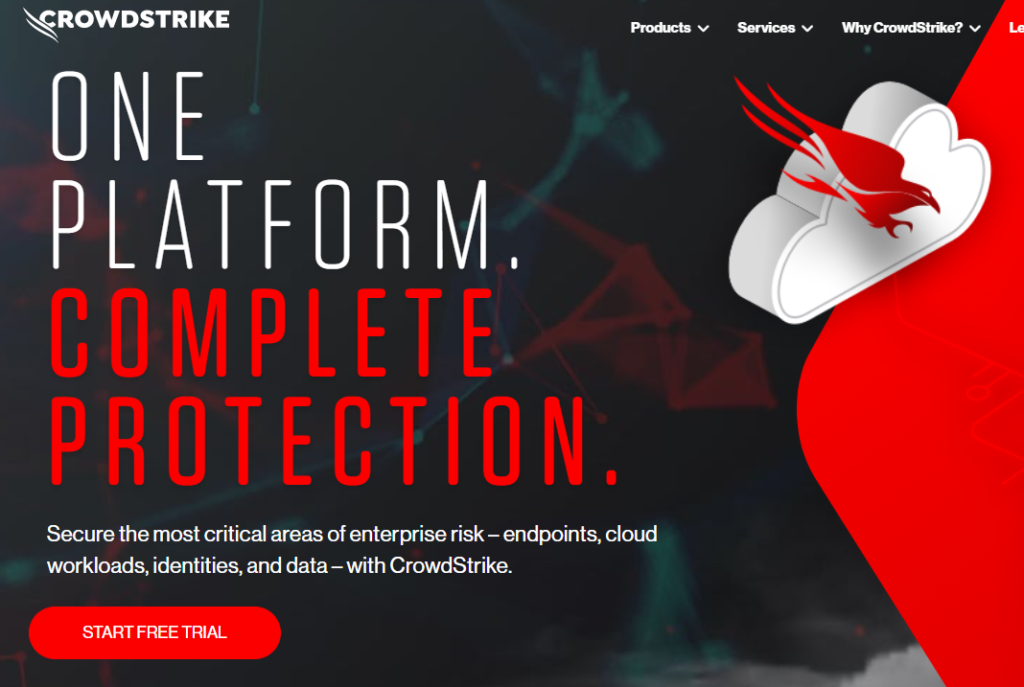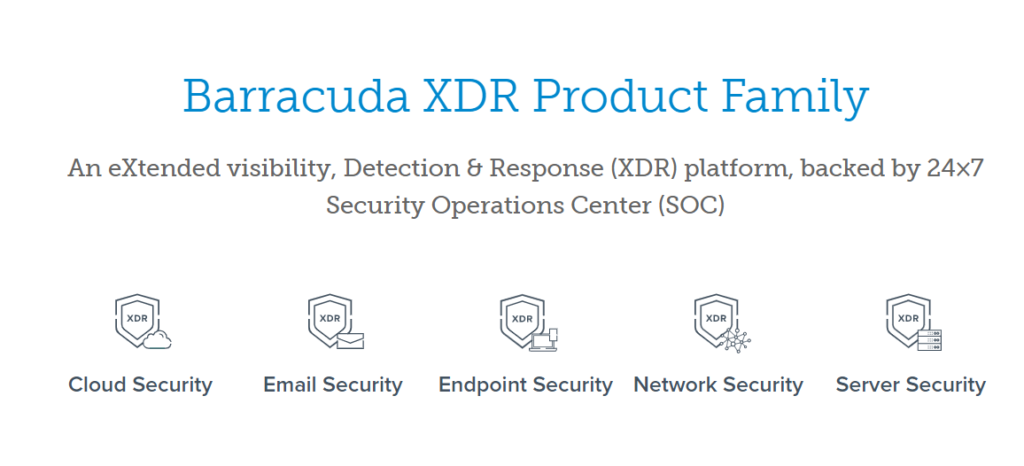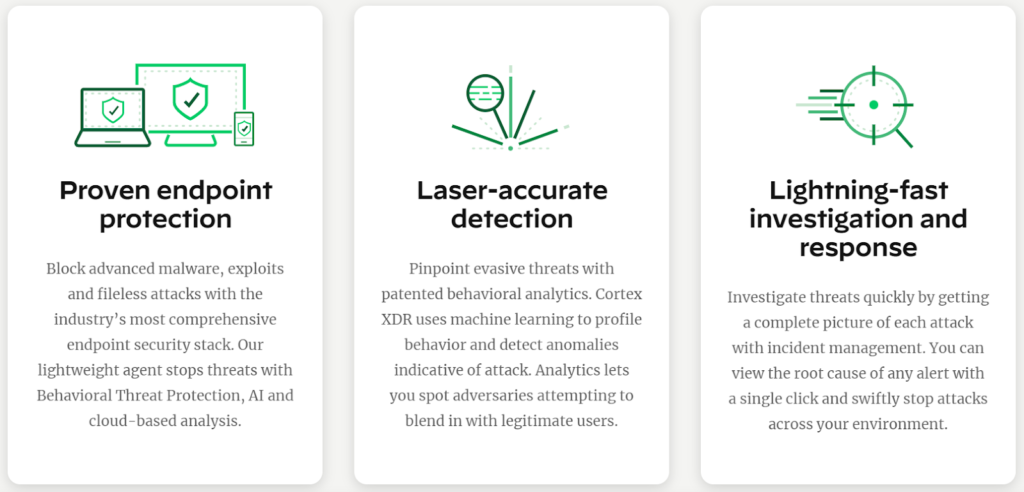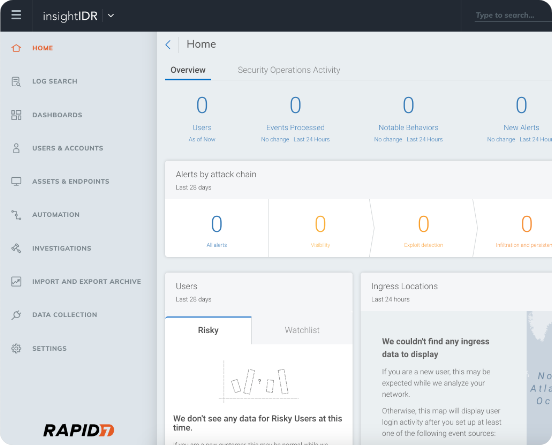
SOURCE: Rawpixel
Modern networks rely on various technologies to provide end users with the services they need. For instance, your network likely has on-premise and cloud hybrid solutions that seamlessly integrate into one another. As a business, you probably also have a range of security solutions to protect your network against attacks and exploits. But, what about their integration? This is where XDR tools make their mark in the cybersecurity landscape.
In this article, I’ll explain what XDR tools are as well as their benefits and challenges. I’ll also tell you about the 4 must-have features you’ll need in your solution. Finally, I’ll share the top 5 XDR tools on the market today. Ready? Here we go!
What Are XDR Tools?
XDR tools consolidate your existing security solutions, often hosted in different segments of your business, to provide high-level threat detection and response capabilities. Integrating your existing solutions into these tools improves the threat detection process’s precision.
Traditionally, organizations often use the following solutions to detect and respond to security threats:
- Security information and event management (SIEM) solutions that look at attack profiles and check them against security lists provided by a vendor
- Threat detection and behavioral analytics solutions that establish a baseline in user or system usage and flag outliers
Consolidating these two solutions provides you with a highly accurate threat-handling solution that spans the entirety of your network segments.
This holistic approach is far superior to the individual security components you use. This is because your XDR tools provide you with more indicators of compromise (IOC) to cross-compare and analyze. Moreover, faster identification helps reduce the time you need to remediate an issue. In turn, this reduces collateral damage and work required to get the system back on its feet!
Alright, now you know what these tools are, but why should you consider investing in one? Let’s take a look at their benefits to answer that question.
3 Benefits of Using XDR Tools
XDR tools offer a ton of benefits for both administrators and end users. Here are some of the more noteworthy ones.
1. Improved Visibility

SOURCE: Flickr
As mentioned earlier, XDR tools combine all your security components. In turn, you’ll gain better visibility into everything that goes on in your network. These tools can also give you a comprehensive set of incident alerts. As a result, you can be confident in your incident identification and reduce false positives. Improved visibility can also help you quickly detect and respond to threats. This is especially important for security operations centers (SOC) wanting to better manage their cybersecurity.
2. Heightened Data Type Compatibility
XDR tools work with a lot of data, including incidents, cases, telemetry, metadata, and data flow. Having all this data allows the tool to easily analyze any existing problems in your network. As a result, you’ll have an easier time locating potential threats and eliminating them before they cause heavy damage.
3. Reduced Process Duration
XDR tools can improve threat assessment times, response times, and dwell times (time required to mitigate or resolve an incident). Due to this, you’ll waste less time trying to detect and respond to threats. In turn, you’ll have time to focus on other tasks, which increases your overall productivity.
Unfortunately, much like any technology, these tools have disadvantages. It’s important to know these disadvantages so you can find ways to mitigate them when implementing this technology. Let’s look at those now.
3 Challenges of Using XDR Tools
You now know that XDR tools are an excellent addition to businesses wishing to unify and improve their cybersecurity solutions. That said, here are some challenges you should be aware of when thinking about using these tools.
1. Limited Third-Party Support
This is one of the biggest challenges of choosing and implementing an XDR tool. Sometimes, it’s difficult to pinpoint which security solutions they support or can work with. Additionally, many XDR tools only provide branded support and don’t specify which individual solutions they support. Remember to bring these concerns up with your vendor before going through with a purchase.
2. Extreme Overreliance
XDR tools provide security automation. This sounds great, right? However, the downside is that administrators may overly rely on this automation instead of their own investigative processes. Using a tool to help you with security is a great idea, but it shouldn’t be at the expense of your own processes. Keep this in mind when implementing an XDR solution in your business.
3. Increased Security Analyst Exhaustion
Security analyst exhaustion is a real issue. Overwhelming your security team can lead to decreased productivity and cyberattack damage in the long run. Therefore, you must consider things like the amount of information your security team has, the amount of research required to resolve a threat, and the number of incidents your team handles at any point in time. Having this information helps you prioritize who needs to do what and, in turn, avert employee burnout.
That said, XDR tools are still a great addition to your cybersecurity arsenal. But, you should choose your XDR tool carefully. To help you in this endeavor, I’ve included the top 4 features everyone should have in their XDR tool!
Top 4 Must-Have XDR Tool Features
You might get overwhelmed when searching for the perfect solution, as you have an abundance of options to choose from, all with unique features. Well, don’t fret because we can help! Here are the 4 must-have features you should look for during your search!
1. Effective Data Collection
XDR tools aren’t worth it if they fail to collect enough of the correct data and process it to discover a threat. Also, even if you find a sign of a threat in progress, you need cross-referencing to confirm that it’s indeed a threat.
To this end, you need a tool that collects data from multiple data sources to spot a threat and identify what it’s doing. Ensure that your chosen tool covers emails, endpoints, servers, cloud solutions, networks, and more. The more data sources you have, the more information your tool will collect and cross-check.
2. Threat Hunting
Threat-hunting is an important aspect of security that you should implement in your cybersecurity strategy. Unfortunately, cybersecurity experts that can help you look for threats are often scarce and costly. However, an XDR tool can help you with this.
Because XDR tools leverage your existing cybersecurity devices and solutions, they can easily find any hidden threats. These tools can help you avoid damage from malware, advanced persistent threats (APTs), and more. This is why it’s a wise idea to invest in an XDR tool with threat-hunting capabilities.
3. User and Entity Behavior Analytics (UEBA)
UEBA uses data analytics to find threats from behavioral abnormalities. It’s a great solution for finding hard-to-detect threats and streamlining your security operations. Additionally, UEBA helps your XDR tool scrutinize your network devices for any unusual user activity.
All XDR tools worth their salt should be able to access UEBA data in real-time and assess it holistically with data from other cybersecurity solutions. Without it, your XDR tool could open you to cyberattackers exploiting gaps in your network
4. Security Orchestration, Automation, and Response (SOAR)
You can use SOAR for threat mitigation purposes, and it’s critical for any network using an XDR tool. Compatible SOAR solutions make it pain-free to neutralize threats discovered from threat hunting. Without SOAR, you’ll need to do this manually, which is time-consuming. Furthermore, manual removal might not effectively remove the threat.
Ideally, you should already have a SOAR tool before investing in an XDR tool. You’ll also need to ensure that the XDR tool you choose is compatible with the SOAR tool you already have in place.
With these must-have features in mind, you’re ready to start hunting for the right solution for your business. Luckily, I’ve compiled a list of the top 5 XDR tools this year to help you in your search.
Top 5 XDR Tools in 2022
Exciting stuff, right? We all love to read about the top technologies out there, and XDR tools are no exception. Below are the top 5 XDR tools on the market today, listed in no particular order.
1. CrowdStrike Falcon Insight XDR

The CrowdStrike Falcon Insight XDR tool provides you with everything you need to centralize your cybersecurity solutions. This is a key player in the market, providing its offerings as modular components. This makes it easy for you to choose what you need to buy. This also makes it easy for you to remember module names since each relates to a particular function. Here are some features you can expect to find in this tool:
- Holistically-managed cybersecurity-as-a-service capabilities
- Simple log management and observability
- Managed CrowdStrike Falcon service
- Comprehensive asset visibility which reduces risk for Internet of Things (IoT) and operations technology (OT) connected devices
Pricing: Available on request.
Note: CrowdStrike recently announced its intent to acquire Spotify, a popular digital music streaming service. This is to expand the Falcon platform with advanced perimeter attack surface management capabilities.
2. Barracuda XDR

Next up on the list is the Barracuda XDR tool, which has an ever-growing list of integrations to support your existing technology stack. In addition, it has a 24/7 detection and response service that allows you to access third-party cybersecurity expertise. This tool’s customizable reports feature also helps you demonstrate the value of security services to stakeholders and meet regulatory requirements. Some more features include:
- Best-in-class SOC
- Cloud-native, managed service providers-centric visibility dashboard
- Go-to-market support, as well as sales and marketing resources
- Streamlined SIEM and SOAR analysis capabilities
Pricing: Available on request.
3. Palo Alto Cortex XDR

Palo Alto Cortex XDR uses machine learning (ML) to find hidden threats like credential attacks, malware, and exfiltration through behavioral analytics. This tool also cuts investigation times with intelligent alert tagging. Moreover, you can swiftly verify threats by reviewing the root case, sequence of events, intelligence, and investigative details on one platform. Here are some more of its notable features:
- Automated threat detection verification
- Internal investigation capability, which includes endpoints not connected to the network
- Efficiently blocks fast-moving attacks, isolates endpoints, and permits custom remediation scripts
- Real-time ecosystem assessment and threat containment capabilities
Pricing: Available on request.
4. Rapid7 InsightIDR

SOURCE: Rapid7
Rapid7’s InsightIDR tool has a sleek user interface and provides an XDR tool and SIEM to help combat cyber threats. This allows you to complement data analytics with behavioral assessment. InsightIDR is lightweight, cloud-based, and offers real-time threat screening with Rapid7’s global SOC teams. Some more of its awesome features include:
- Improved signal that has less noise for assessing your entire attack surface
- Centralized interface
- Easily scalable to meet your business needs faster
- Rapid7’s remediation playbooks to define detailed timelines
Pricing: Available on request.
The top 5 products listed here are the best solutions, yet one will be better for your business, depending on your needs. To this end, draw up a list of what you’re looking for using the must-have features discussed earlier before making a decision.
5. KerioControl

SOURCE: GFI
GFI’s KerioControl, while not an XDR tool, is an all-in-one cybersecurity solution. It’s been designed for flexible deployment and businesses that need a powerful yet user-friendly solution. One of this tool’s significant benefits is that it has a next-generation firewall (NGFW) and a robust VPN integrated into it. Furthermore, this tool provides you with excellent usage reporting that helps boost overall productivity. KerioControl also offers the following features:
- Easy access from anywhere
- Industry-leading web, content, and application filtering capabilities
- Advanced intrusion prevention system (IPS)
- High availability cloud-hosted solution
Pricing: Sales-as-a-service based on the number of users.
Some of you might be wondering if an XDR tool is right for your specific business needs. In the next section, I’ll cover some scenarios where an XDR solution would benefit your business.
Are XDR Tools Right for You?
Consolidating information from your existing tools on your network means you need an extensive enough network. Specifically, it needs pre-existing detection and response measures to justify the need for XDR tools to manage them.
If you intend to purchase an XDR tool, you should put in place essential detect and respond solutions first. Essentially, you often see XDR tools used in large organizations that leverage various technology and network segmentation to serve users. XDR tools are also appropriate for large companies with a SOC.
Furthermore, XDR caters to a managed security service provider (MSSP) offering under a single branded solution such as Palo Alto. This effectively reduces your overheads and uses a convenient subscription model for SMBs. As a result, you can consolidate and improve user input usefulness and provide high-priority security.
I hope this gave you some more insight into XDR tools and whether you should invest in one. Let’s wrap up!
Final Thoughts
In today’s complex networks, it’s hard to get a holistic view of threats across your business’s technology landscape. Luckily, XDR tools are excellent for unifying cybersecurity solutions. As such, you must select a highly integrated XDR solution with core cybersecurity features to do the job well. These features include things like NGFWs already present in the tool. When searching for a tool, you must consider your business’s needs. The list above of must-have features can help you with that. Lastly, consider the maturity of your current cybersecurity over each of your network’s segments. And, as always, feel free to save this article as a point of reference for the future.
Do you have more questions about XDR tools? Check out the FAQ and Resources sections below!
FAQ
What is a SIEM solution?
Security information and event management (SIEM) solutions help businesses recognize security threats and vulnerabilities. Specifically, they search for user behavior anomalies and use AI to automate detection and response measures. SIEMs are often principal components of a security operation center (SOC).
Why is using an XDR tool with existing cybersecurity software beneficial?
Companies often use software solutions to fill gaps caused by the scarcity of cybersecurity professionals. Unlike software, cybersecurity professionals can assess the intent of an attack. Using an XDR helps link all your security solutions together. An XDR tool also allows users with less security experience to effectively find and remediate threats using a unified threat management solution.
What are cybersecurity false positives during threat hunting?
Threat hunting helps you look for changes to your network from a cybercriminal. If one data source reports an anomaly, you could conclude that an attack is in progress when it could be genuine activity. Reduce false positives with more data from different security solution sources and automate analysis with an XDR tool.
How can I take my cybersecurity to the next level?
You can improve your cybersecurity in two ways to meet more advanced threats. For instance, you can integrate cybersecurity solutions with an XDR tool to enable administrators to manage it with little experience in the field. Also, you can use a third-party cybersecurity team if you can’t afford or create an in-house team.
When should I consider adding XDR to my network?
Add an XDR tool to integrate your cybersecurity tools as soon as possible. XDR tools monitor data and behavior from multiple cybersecurity solutions to help provide accurate threat detection with fewer false positives. If your cybersecurity team struggles, a centralized XDR platform can stop them from chasing ghosts.
Resources
TechGenix: Article on Types of Malware
Learn about the different types of malware in the wild and how you can protect your business against them.
TechGenix: Article on Next-Generation Firewalls (NGFWs)
Discover why NGFWs are disrupting the firewall industry and helping businesses like yours.
TechGenix: Article on Network Perimeter Security
Find out more about network perimeter security and how you can improve yours.
TechGenix: Article on Cyber Threat Hunting
Understand more about cyber threat hunting and why you must actively investigate your network.
TechGenix: Article on Advanced Persistent Threats (APTs)
Educate yourself on advanced persistent threats and how they can damage your network.



